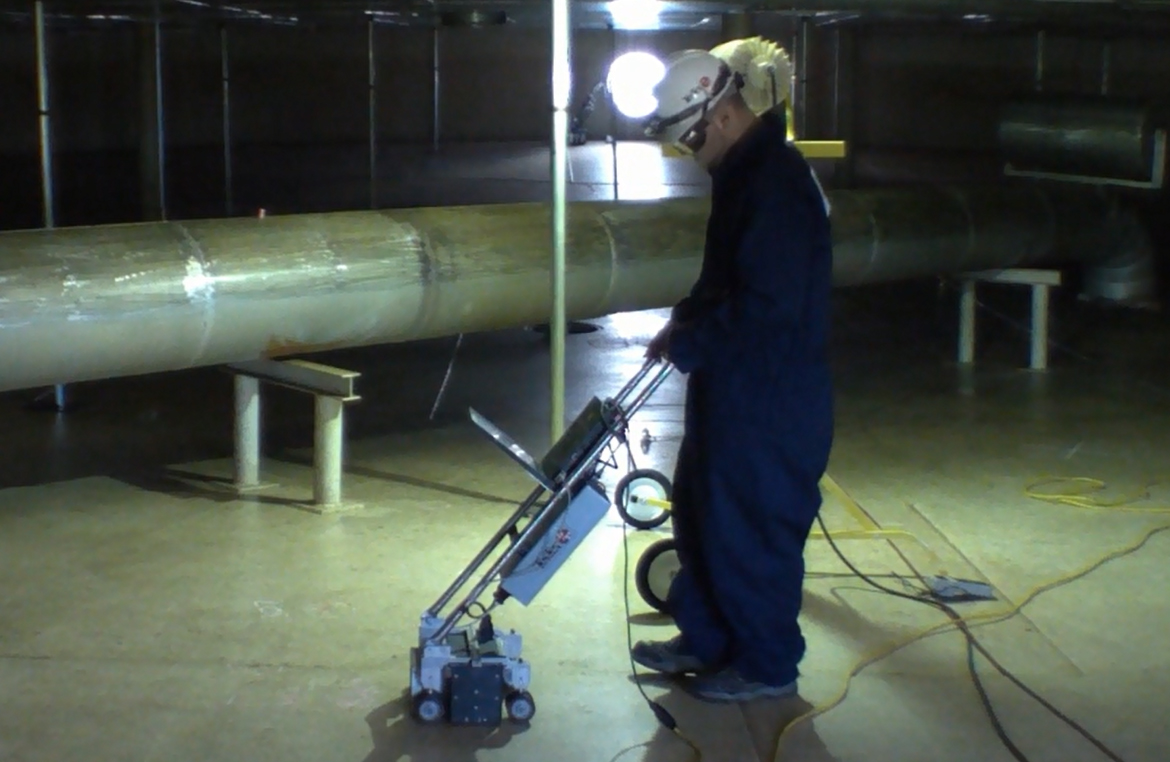Just How Tank Welding Inspection Stops Future Structural Failures
Just How Tank Welding Inspection Stops Future Structural Failures
Blog Article
Comprehensive Guide to Effective Tank Welding Assessment Techniques and Ideal Practices for High Quality Guarantee
In the realm of tank welding, strenuous assessment techniques are paramount for guarding structural honesty and making sure compliance with sector guidelines. As we check out these vital elements, it ends up being clear that a proactive assessment technique is not just advantageous, however necessary for functional success in atmospheres dealing with unsafe products.
Importance of Tank Welding Examination

Tank welding assessment serves as a preventative procedure, identifying prospective issues such as splits, porosity, or inappropriate joint infiltration prior to they rise right into severe issues. Routine inspections not just comply with industry guidelines and criteria but also improve the longevity of the containers, decreasing the requirement for expensive fixings or replacements.

Visual Inspection Strategies
Using methodical visual inspection techniques is essential for evaluating the high quality and stability of welded joints in tanks. This method serves as the first line of protection in recognizing possible problems such as fractures, undercuts, and insufficient infiltration. The assessor needs to come close to the task with a keen eye, making use of proper tools like amplifying glasses, flashlights, and mirrors to enhance visibility.
Throughout the examination process, the examiner should evaluate the weld account, guaranteeing it follows specified criteria and standards (Tank Welding Inspection). This includes analyzing the grain size, height, and fusion with the base product. Examiners ought to additionally pay close focus to the bordering locations for indicators of thermal distortion or contamination that may affect the weld's efficiency
Paperwork of findings is crucial; assessors ought to record any kind of anomalies, classifying them by intensity for additional examination. This methodical strategy not just help in immediate issue identification yet likewise contributes to lasting quality control by making sure compliance with sector standards. Normal training and calibration of visual examination methods additionally improve the integrity of evaluations, inevitably resulting in more secure and much more sturdy storage tank frameworks.
Non-Destructive Evaluating Approaches
Non-destructive testing (NDT) techniques are regularly employed in storage tank welding assessments to assess the integrity of bonded joints without Recommended Site jeopardizing their architectural stability. These methods are crucial for recognizing problems such as fractures, gaps, and inclusions that might bring about devastating failings if left unseen.
Common NDT techniques consist of ultrasonic screening (UT), which utilizes high-frequency acoustic waves to identify internal defects; radiographic screening (RT), using X-rays or gamma rays to visualize weld structures; and magnetic bit screening (MT), which discloses surface and near-surface gaps in ferromagnetic products (Tank Welding Inspection). Fluid penetrant screening (PT) is also widely utilized, with the ability of identifying surface-breaking defects by applying a fluorescent or color contrast color
Each NDT approach has its details applications and benefits, making it essential for inspectors to choose the proper method based upon the product and the kind of weld being reviewed. The assimilation of these NDT approaches right into the examination procedure enhances the overall quality assurance framework, ensuring that welded tanks meet safety and performance standards. Ultimately, NDT plays an essential role in maintaining the integrity and longevity of container structures in different industrial applications.

Documents and Coverage
Making certain thorough documentation and reporting throughout container welding assessments dig this is essential for keeping conformity with sector criteria and assisting in efficient communication among stakeholders. Proper documentation offers as a thorough document of assessment activities, findings, and any rehabilitative activities taken throughout the welding procedure. This info is important not only for quality control however also for audits and regulatory testimonials.

A well-structured inspection record ought to include information such as the date of inspection, names of assessors, welding treatments employed, materials utilized, and any kind of inconsistencies from developed standards. In addition, photos and layouts can boost the quality of the record, providing aesthetic context to the look at this web-site findings. It is additionally crucial to document any kind of non-conformities together with their resolution, ensuring that all stakeholders are educated of potential threats and the steps required to reduce them.
In addition, preserving a centralized data source for all inspection records enables simple access and review, fostering a culture of openness and responsibility. By focusing on precise documents and reporting, companies can not just support top quality assurance however also enhance their online reputation within the market, inevitably resulting in improved safety and security and operational effectiveness.
Continual Improvement Practices
Constant improvement practices are important for enhancing the quality and performance of container welding examinations. One effective strategy entails regular training and upskilling of inspection personnel to remain abreast of the most current welding innovations and requirements.
Moreover, making use of data-driven evaluation enables organizations to track inspection outcomes, determine patterns, and pinpoint locations for improvement. Using tools such as root reason evaluation can help in understanding the underlying concerns causing problems, making it possible for targeted treatments. Furthermore, soliciting comments from evaluation groups and stakeholders produces a collaborative setting that encourages ingenious solutions.
Incorporating advanced technologies, such as computerized examination systems and real-time monitoring, can dramatically boost the accuracy and rate of evaluations. Normal audits of the inspection procedures also add to a culture of responsibility and continuous improvement. Inevitably, these constant renovation methods not just raise the quality of storage tank welding inspections however additionally contribute to general functional excellence and consumer complete satisfaction.
Verdict
Finally, efficient container welding evaluation is essential for ensuring the structural honesty and safety of storage systems, especially those handling dangerous products. Using a combination of visual assessment strategies and non-destructive testing techniques assists in the very early identification of problems, consequently keeping conformity with industry standards. Furthermore, durable documentation and a commitment to constant enhancement boost top quality assurance methods. Inevitably, these actions contribute considerably to operational excellence and the prevention of prospective security threats.
Report this page